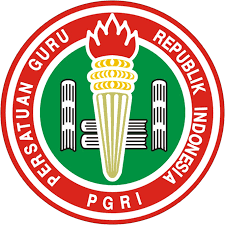TRADITION "TELONS AND PITONS"IN THE COMMUNITY OF JAVA DISTRICT TILES AND GAMBIRAN, BANYUWANGI REGENCY
DOI:
https://doi.org/10.36526/js.v3i2.699Keywords:
Tradisi telon dan piton; Masyarakat Jawa; Banyuwangi;Abstract
This study aims to determine the origins of the tradition of telons and pythons, know the procession of carrying out the traditions of telons and pits, and determine the meaning contained in the traditions of telons and pits in Genteng and Gambiran Districts. In this study using a qualitative descriptive method. How to collect data by interview, observation, documentation The research instrument is the researcher himself with the help of tools in the form of a camera and a tool for note-taking. The data obtained are then analyzed in an interactive way. The results showed that: (1) the tradition of the telons and pythons is the alkultura of the cultural culture of Islam with the Hindu religion, (a) the telons are derived from the word telu which means three, the telons are carried out during a three-month pregnancy in hopes the fetus being conceived always gets protection, (b) the pythons are derived from the word pitu which means seven, the pythons are carried out during the seventh pregnancy with the aim of requesting safety for the mother and the prospective baby to be born, (2) the implementation of the telons and the pythons in Genteng and Gambiran sub-districts, (a) the implementation of telons in Genteng sub-district, including: preparing three-color jenangs, implementation in Gambiran sub-district, including: kuluban rice, black jenang, (b) implementing pitons in Genteng sub-district : siraman, pantes, sell salad, sell dawet, selametan. read three verses of the Koran, implementation in Gambiran sub-district: breaking ivory recipe, making four color jenang, sengkolo jenang, rujak, dawet and pendem polo, (3) the meaning of the tradition of telons and pythons is to get children who sholeh-sholeha, can be relied on, both words and deeds, are beneficial to others and respect both parents and survived until the procession gave birth
References
Elvi. Susanti. 2015. Komunikasi Ritual Tradisi Tujuh Bulanan (Studi Etnografi Komunikasi Bagi Etnis Jawa Desa Penarungan Kecamatan Torgamba Kabupaten Labuhanbatu Selatan). “ Jom FISIPâ€. Vol 02, No. 2. 2015.
Geertz Clifford. (2013). Agama Jawa Abangan, Santri, Priyai DalamKebudayaan Jawa. Jakarta : Komunitas Bambu.
Muniroh. Siti.2015. Nujuh Bulanan Java Community Tradition In The Village Of
Sialang Baru District Of Lubuk In Siak Regency. “Jom Sipâ€. Vol.02, No.2. 2015.
Nurjannah, Rina. 2013. Makn Simbolik Yang Terdapat Pada Kesenian Tradisional Bongkaran Dalam Upacara Adat Mitoni Di Desa Sidanegara Kecamatan Kaligodang Kabupaten Purbalingga. “ Skripsi â€. Universitas Negeri Yogyakarta.
Retnoningsih, Dainka. 2014. Kajian Folkor Rangkaian Upacara Adat Kehamilan Sampai Kelahiran Bayi Didesa Borongan. Kecamatan Polanharjo, Kabupaten Klaten. “ Skripsi â€. Universitas Negeri Yogyakarta.
Soemodidjojo. (1994). Kitab Primbon Betaljemur Admmakna (Bahasa Indonesia). Yogyakarta: CV. Buana Raya.
Setioningsih, Mucchibbah. 2009. Adopsi Ajaran Islam Dalam Ritual Mitoni Didesa Ngagel, Kecamatan Dukuh Seti Kabupaten Pati. “ Skripsi â€. Universitas Islam Negeri Sunan Kalijaga Yogyakarta.
Safira Daniel Muhammad Selania Aldy. 2013. Tradisi Mapati Dan Mitoni Masyarakat Jawa Islam. “ Prosiding â€. Internasional.
Widjajanti, Andriyanto, Yanto Andi.2015. Simbol-simbol linggual dalam tuturan “Ujub Genduren†Siklus Hidup Masyarakat Desa Seneporejo. “Artikel Ilmiah Mahasiswaâ€. 2015.
Yana, Ujang.2014. Pembacaan Tiga Surat Al-Qur’an Dalam Tradisi Tujuh Bulan( Di Masyarakat Selandaka, Sumpuh, Banyumas ). “ Skripsi â€. Universitas Islam Negeri Sunan Kalijaga Yogyakarta.





























